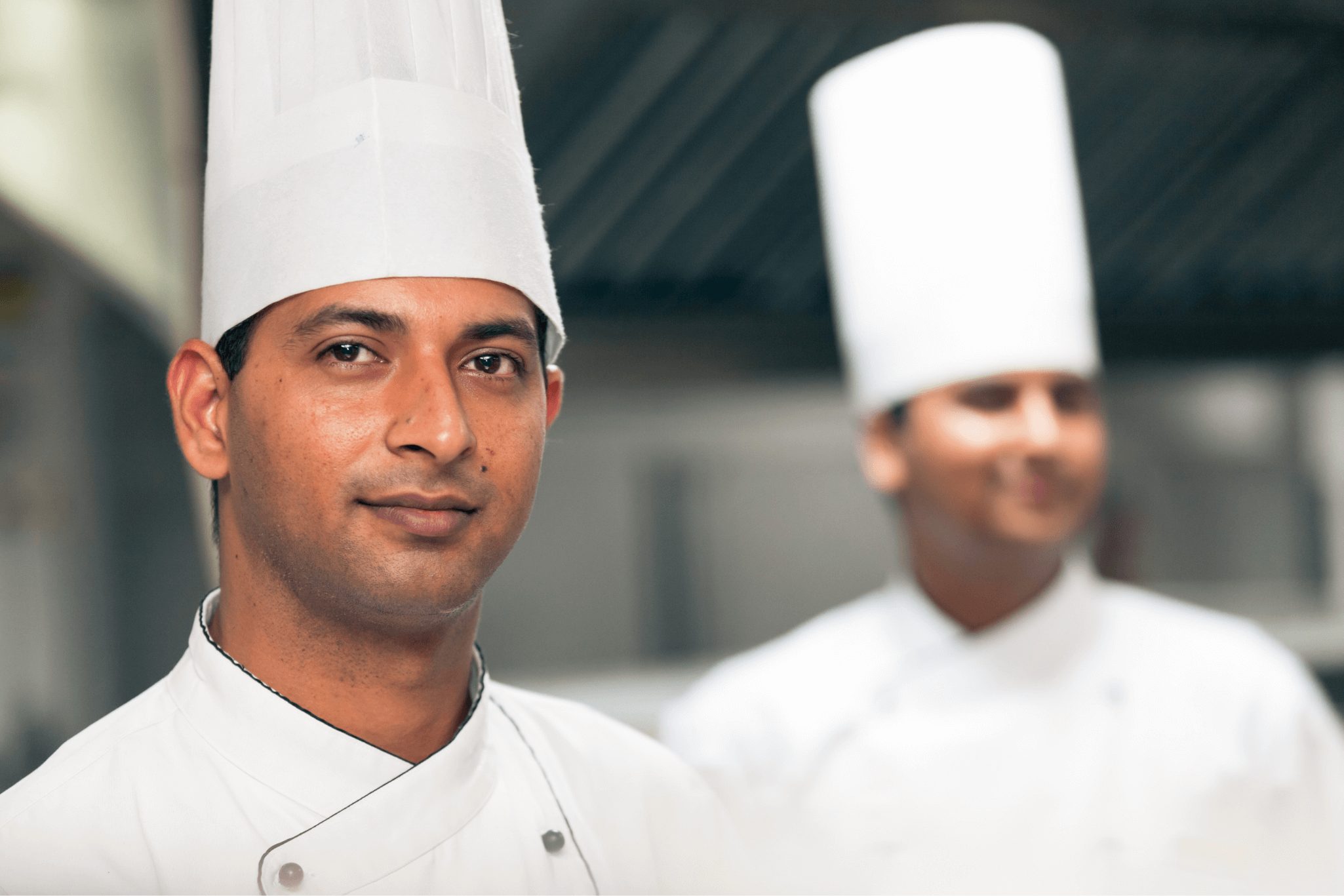People often find themselves intimidated by the idea of cooking Indian food, with Indian spices, because of the many different spices that are typically used.
It doesn’t help that some recipes require both whole and ground spices, all combined into a more complex mixture of spices.
Want To Skip Ahead?
- Reasons To Choose Indian Spices
- Common Indian Spices
- Other Indian Spices And Their Uses
- Indian Spices For Beginners
- Kitchen Utensils To Prepare Indian Food
However, once you understand and can identify these spices, it becomes a lot less threatening.
We’ll be looking at various Indian spices and their characteristics. We will also offer you recipes so that you can try out these spices confidently. But first, let’s look at the difference between whole and ground spices.
Reasons to choose Indian recipes
While you may think about curry and oil when you consider Indian cuisine, the truth is that there are many healthy dishes.
There are tons of vegetarian options, as well as dishes like fish amritsai, vindaloo, and rogan josh which are known around the world and include plenty of meat.
Indian cooking is something a mother may pass down to their daughters starting early in life. Meals are also involved and often include many dishes, along with rice or other staples, and a dessert.
The many groups that have passed through India have also added to the cuisine, with everything from Arab, Portuguese, and Persians influencing modern dishes in India today.
- Aryan – this culture brought an emphasis on body and mind-enhancing properties of many foods.
- Arab & Persian – led to Mughal style cooking with thick gravies and dry fruits and nuts being introduced to recipes.
- British – passed along a love for tea, along with European flair for some dishes.
- Portuguese – influenced tasty dishes like vindaloo and xacuti.
Ground vs. whole spices
Many people prefer to buy whole spices, which they then grind on their own using a spice or coffee grinder. The reason behind this is three-fold.
First, these spices often last longer than already ground spices. Second, the flavour sticks around for a more extended period. Lastly, when buying in bulk, these spices are often much cheaper.
On the other hand, if you choose to use ground spices, they have their own set of advantages. The first is that by purchasing them ground, you will cut down your prep time.
Also, if they are something you use quite often, you likely won’t have a problem with them losing flavour over time.
Tips for reading recipes
One of the reasons that Indian food is considered complicated to make is due to the list of ingredients, many of which are unfamiliar to many.
However, once you know these components, you’ll be able to make any delicious Indian dish that you like.
The first step you should take when cooking Indian food is to thoroughly read over the recipe beforehand. This gives you time to get together all the needed
spices, so you will have them the second the recipe calls for them.
And definitely beats going through the pantry time and again trying to find different jars of spice. Having everything together before preparation will cut down on stress and time when you actually begin to create the recipe.
The Best 11 Common Indian Spices
First, we want to look at a list of standard spices that you’ll find in Indian recipes. We’ll also give a bit of information about it, so you understand how and why it is used.
After that, we will provide you with a link to a simple recipe that features the spice, so you can try it if you like. We’ll put these in alphabetical order, so you can find them easier.
Black Pepper (kali mirch)
You may not know this, but black pepper is a native spice to India, especially in the Malabar and Western Ghats areas. It is also notoriously hard to grow spice which requires many specificities such as the amount of rainfall.
This is why the prices for fresh black pepper can vary quite a bit. Black pepper is toasted before being blended. However, it can also be used freshly ground into dishes for the best flavour.
Recipe: Fiery Black Pepper Chicken
Cardamom (elaichi)
In Indian cooking, there are actually two types of cardamom that are used. The first is green, which is the most common of the two. It is used in everything from spice mixtures to desserts and lassis.
With green cardamom, the flavour is sweet and light, with a note of eucalyptus. Also when used in spice mixes, it can be blended whole.
However, when it’s used in sugary foods, you will open the pod and crush up the seeds before you use them.
The other cardamom used in Indian dishes is black cardamom, which is a smoky and powerful spice.
Generally, the seeds are the only part of the spice that is used. However, if you do use the entire pod, you should remove it before serving the dish, because it can be very spicy.
Recipe: Cardamom Chicken Curry
Cassia Bark (Cinnamomum tamala)
The cassia bark is also sometimes known as “Chinese cinnamon” and is related to the cinnamon tree. That said, there are differences between cinnamon and cassia bark.
For one, cassia is more cost efficient to produce, which is also why most ground cinnamon you see at a store is made from cassia bark.
However, many Indian dishes use cassia because of the milder flavour which can be used in more significant quantities. Cassia can be ground into mixes or be used whole.
It’s simple to determine an ingredient is cassia, as it has a bark-like texture. You can tell it’s fresh if you rub it with your fingers and smell a cinnamon fragrance.
Recipe: Kashmiri Potato Curry
Clove (laung)
You may be familiar with cloves and not know they are a staple of Indian cooking. The flavour of clove is robust, with anise notes and a high concentration of oils.
Cloves are flowers, so their oils are pressed before they are dried and used in any kind of cooking.
That said, the clove can be used as a blend in a spice mix or whole. Do be aware they may overpower your dish if too much is used.
Recipe: Indian Style Rice
Coriander (dhania)
One of the most popular spices in Indian dishes is coriander. It’s a golden-yellow with a ridged texture. It’s also one of the oldest spices known in the entire world.
It has very fragrant seeds that have a note of citrus to them. Ground coriander is a common spice in Indian dishes, while whole coriander can also be used as a base for dozens of spice mixes.
It does need to be dry roasted. You want to turn the heat off when you see a golden colour on the seeds and they begin popping.
Recipe: Indian Spiced Fish with Coriander Rice
Cumin (jeera)
Cumin is a spice that gives a nice, smoky flavour to Indian food. It is used both whole an in mixes, as are many spices in this type of cooking. If you are trying to identity cumin, you’ll want to look for ridged brown seeds and lots of fragrance.
That said, it can be confused with anise, caraway, and fennel seeds so make sure you look for the brown of the seeds and the smoky smell. In most cases, cumin is best when fresh.
However, if you are roasting it on your own, you should know that it can burn quite quickly, which will make it bitter and unfit for recipes.
Toast it no more than 30 seconds and then allow it to cool before you blend it with other spices.
Recipe: Basic Indian Gravy
Fenugreek (methi)
This is an indian spice that gives some curry powders their musky, earthy taste and scent. The seeds themselves are yellow, and they resemble small wheat bits.
The leaves of the fenugreek are also used as a spice after being dried. This offers the flavour that gives butter chicken its unique character.
As with cloves, fenugreek should be used in small amounts, as they can overpower dishes. They also are used in some types of medication.
Recipe: Indian Methi Chicken
Mustard Seed (rai)
This spice comes in many different colours, including black, brown, and yellow. They can all be used in Indian cooking, and all taste the same.
You release the flavour of a mustard seed by crushing it or cooking it in oil. It gives a nutty and smoky flavour that is common in curry powders and curry dishes.
Mustard oil is also used in some cases as a flavouring for Indian cuisine.
Recipe: Spicy Yellow Indian Cabbage
Nutmeg & Mace (jaiphal & javitri)
Nutmeg and mace are both frequent entries into Indian dishes. Mace is actually the covering of the nutmeg. It is a dark red colour. Nutmeg is typically processed by removing this and sliding the mace off.
There is an outer coated that must be taken off before it can be grated. Dried mace is a golden orange colour that can add a warm depth to your dish.
When nutmeg is dried, it lasts a long time, so you can buy it whole and grate it as needed. It is one of a few spices where toasting is not recommended as it changes the subtle flavours.
Recipe: Steamed Nutmeg Flan
Saffron (kesar)
Saffron has the distinction of being the most expensive spice in the entire world. It’s more valuable by weight than even gold.
The reason for that is due to how much work it takes to produce it. Saffron comes from crocus flowers and has to be picked by hand. When choosing saffron, be aware that the best types are dark red and come from Iran, Kashmir, or Spain.
And the darker the colour is, the fresher the saffron is. It’s hard to describe the flavour of the spice, as everyone notices different notes.
That said, saffron is very vibrant and only needs to be used in small quantities. It’s often added to warm milk or water before being introduced to a dish.
Recipe: Indian Lamb Biryani
Turmeric (haldi)
Another spice that is very common in Indian cooking is turmeric. This spice can be used fresh, or it can be dried. It also has a number of health benefits and is often used in curries and mixes of spices.
When dried, it does have a stronger flavour than fresh. It also has a tendency to cause stains, so be careful with your apparel while cooking with it.
And also has a scent that can best be described as earthy. It can also be used in curries to give a golden colour to the famous dish.
Recipe: Indian Spiced Chicken (or Vegetable) Turmeric Soup
Other Indian Spices and Their Uses
While we’ve looked at most of the common Indian spices, there are plenty of others that you will come across.
These might be used in only a dish or two that you enjoy, or they could become part of your favourite spice mixture used in Indian cooking. Either way, we’ll look at other great spices now.
Black Salt (kala namak)
Black salt, surprisingly, is not black at all. It’s actually a grey/pink colour with a unique odour that is pungent and sulfurous. This spice is seen in dishes like chaat and chutneys.
Curry Leaves (karee patte)
Curry leaves offer a smoky, yet citrus, notes in terms of aroma and flavour. They can often be found at Indian grocery stores.
Curry Powder (karee pauder)
Curry powder is not a traditional Indian spice, but it is a blend that can be used in Indian dishes, nonetheless. In addition curry powder often contains turmeric, coriander, red chilli powder, cumin, and other spices. It does not include curry leaves.
Fennel (saumph)
This is an aromatic seed that has a liquorice, sweet-type of flavour.
Garam Masala (garam masala)
This is one of the very few premixed spice blends that is often used in Indian cooking. It has many different ingredients, which can vary by manufacturer.
Kashmiri Chili Powder (lal mirchi)
This is a mild chilli powder that resembles a mix of cayenne and paprika. It is typically used in dishes to bring out a beautiful, bright red colour.
Kapok Bugs (maratti moggu)
This spice comes from the unopened bug of the red silk cotton tree. It’s dark brown and looks similar to a clove, but is more substantial.
It’s often fried in oil to release the full flavour profile, which is similar to black pepper and mustard.
Nigella (kalonji)
These are triangle shaped seeds that are small and black in colour. They actually resemble sesame seeds that you might see on a bun at a fast food restaurant.
And offer a taste that is peppery and nutty, along with a pungent scent. Kalonji is most often used in chutney and pickle recipes.
Pomegranate Seeds (Anardana)
These are pomegranate seeds that have been dried out. Due to the taste of the pomegranate juice, these tend to be tangy but sweet and can add a richness to any dish.
Star Anise (chakr phool)
This spice is shaped like a star, giving it its name. It also has a pretty significant flavour of liquorice. Fennel can be a similar flavour, but anise is a bit more savoury and bitter where fennel has a note of sweetness.
Indian Spices for Beginners
If you are just beginning to cook Indian food, you do not need all of the spices above. In fact, you probably will never need every single one from the list of common spices, much less the rarer spices listed.
There are a handful of spices that are excellent to start with. You don’t need massive amounts and can choose ground or whole, but the whole is always recommended.
The eight starter spices are the following:
- Cumin
- Coriander (seeds and ground)
- Turmeric (ground)
- Paprika (ground)
- Mustard seeds
- Cloves (ground and whole)
- Cinnamon (ground and whole)
- Green cardamom seeds
The great thing about these starter spices is that they are not only suitable for Indian dishes, but can also be used in many African, Spanish, and Middle Eastern recipes, as well.
You’ll be well set for cooking dishes from all sorts of places if you keep the aforementioned spices stocked in your pantry.
Kitchen Utensils To Prepare Indian Food
In addition to having the right ingredients, you will likely need some kitchen utensils to prepare Indian food successfully. The good news is that many of these items will be found in any kitchen.
- Mortar & Pestle – For rough grinding of whole spices and fresh herbs
- Food Processor – Along with attachments, this can be used for everything from puree to wet pastes.
- Cutting Boards – You will want at least two cutting boards, one for meats and the other for vegetables. We recommend plastic or wood as they last longer and don’t harm your knives.
- Knives – A set of sharp knives is a must, as you will be chopping both meat and vegetables.
- Grater – This is useful when making powders or pastes from garlic, cinnamon, ginger, and nutmeg.
- Mixing Bowls – This might be used to combine raw ingredients, batters, or for making dough for bread.
- Rolling Pin – Makes rolling dough for Indian pastry and bread much easier.
- Colander – This will be used for washing lentils and vegetables, as well as for draining rice.
- Pots & Pans – Heavy bottomed pans are handy. A deep frying pan, flat saucepans, and griddle pan is a good start.
- Wok – A heavy wok is useful for cooking. You can also get a karahi or kadhai, which is the Indian version of a wok.
- Pressure Cooker – This helps speed up slow cooking and is great for cooking foods.
- Steamer – This is a great kitchen appliance that can be used to steam veggies, fish, rice, and more.
- Whisk – For whisking any yoghurts and gravies.
- Tongs – Used for frying foods, as well as roasting foods on an Indian tandoor.
- Cooking Spoons – Spatulas and ladles also fall under this category. If you use non-stick pans, make sure these are wooden.
- Slotted Spoon – Perfect for draining and cooking deep-fried
Common Indian Recipes
If you are just getting into Indian food, there are a few dishes that you’ll want to try. We’ll go over these and also offer recipes, so you can see precisely how spices play into traditional Indian recipes.
Samosa
The samosa is similar to a Cornish pasty, empanada, or pierogi. They are often fried but can also be baked and are known for being triangular in shape.
And the inside of the samosa is filled with vegetables like onions and peas.
These can be mild or spicy, depending on your tastes. These can be eaten at any time but make an especially great appetizer before a more filling meal.
Recipe: Punjabi Samosa
Chutney & Raita
This is what your samosa will be dipped in, although they can also be used in various other ways.
Chutney is essentially a sauce that has spice along with fruit or vegetables. These are often green or red.
The green is typically coriander or mint, while the red is tamarind. Raita, on the other hand, is a yoghurt-based sauce that has many spices. It’s suitable for cooling off dishes that are spicier.
Recipe: Mango Chutney
Recipe: Cucumber Raita
Chicken Korma
This dish is an almost stew-like dish where chicken is braised in a sauce that is made from spices and butter, coconut milk, and yoghurt.
It may be a little sweet with an underlying nutty taste, along with a smoky note from cumin. Sometimes there are also vegetables you can soak up with some naan bread.
Recipe: Indian Chicken Korma
Gulab Jamun
For dessert, gulab jamun is a dish that consists of fried balls of dough with a sweet syrup coating on them. It’s similar to a doughnut hole, but with a different flavour profile.
Recipe: Gulab Jamun
And that about wraps it up. We hope you’ve learned a lot about the different spices that are used in Indian cooking, as well as what dishes are standard.
If you are interested in cooking Indian food, any of the recipes we’ve provided are excellent.



















